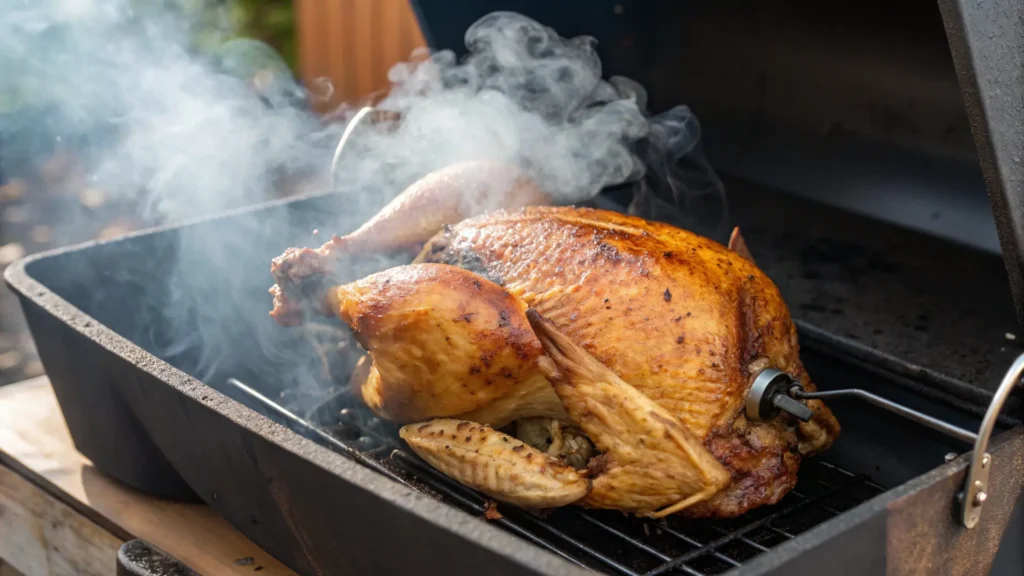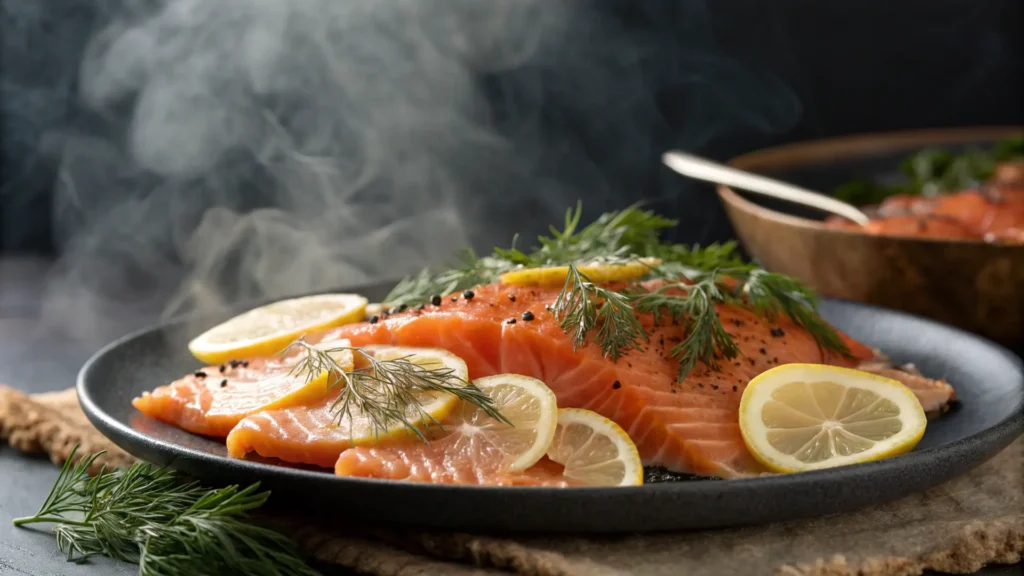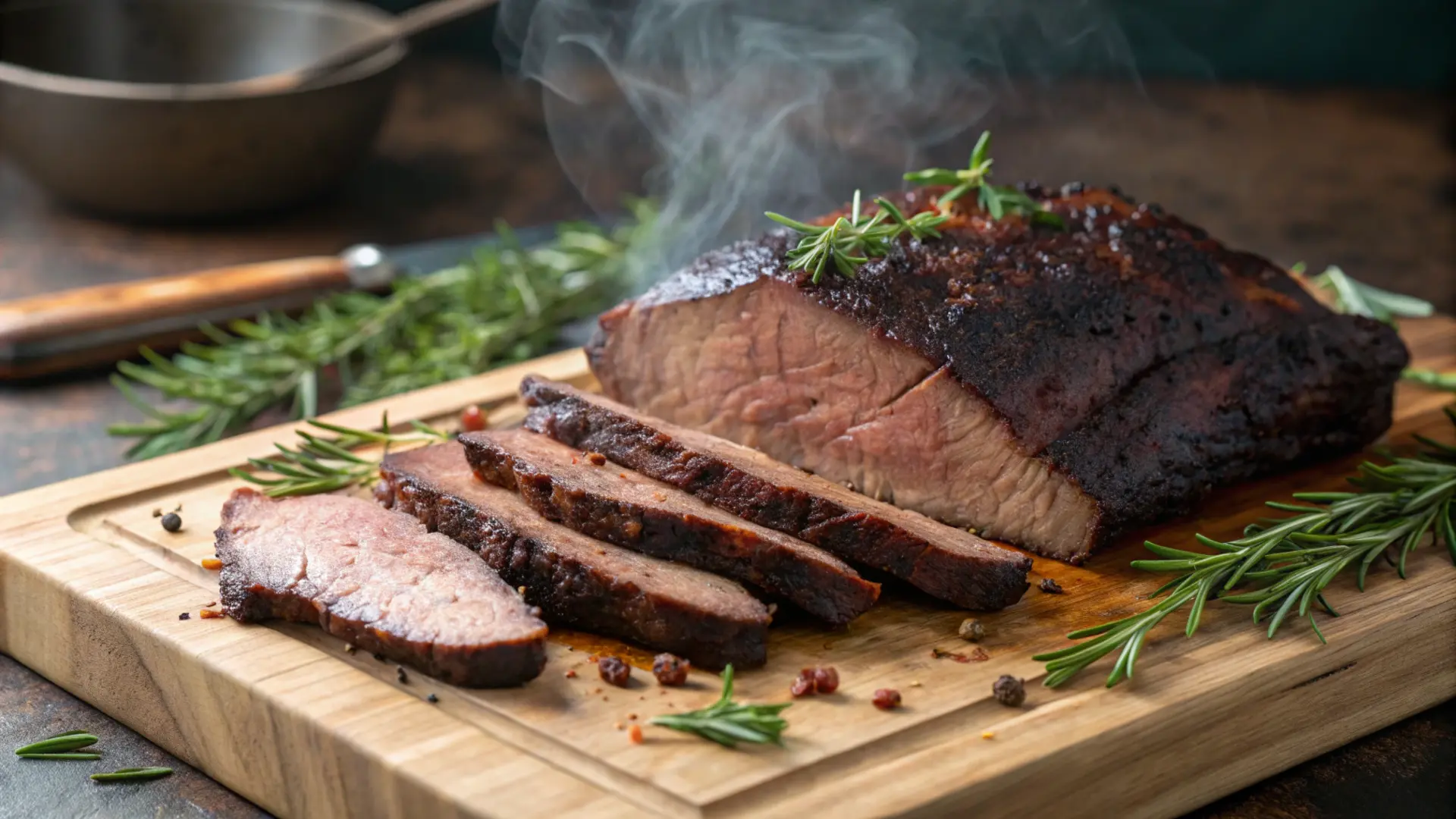Smoking meats is one of the oldest and most flavorful cooking techniques. It enhances the natural flavors of meat while adding a rich, smoky aroma that’s hard to beat. Whether you’re a seasoned pitmaster or a complete beginner, learning how to smoke meat properly can elevate your culinary skills and help you create restaurant-quality dishes at home.
In this comprehensive guide, you’ll learn about the best meats for smoking, the 4-hour rule, smoking times, and expert tips to achieve perfectly smoked meat. We’ll also answer common questions and clear up misconceptions to ensure you get the best results every time.
Table of Contents
Introduction to Smoking Meats
Why Smoking Meat is Popular
Smoking meat is popular because it imparts a deep, complex flavor that can’t be achieved with other cooking methods. The slow, low-temperature cooking process allows the smoke to penetrate the meat, enhancing its taste and tenderness. The variety of wood used for smoking — from hickory to cherry to mesquite — creates different flavor profiles, giving each dish a unique taste.
Smoking also helps preserve meat. Historically, it was used as a way to extend the shelf life of meat before refrigeration became common. Today, it’s celebrated more for its taste and the art of mastering the perfect smoke.
Learn more about how to make perfect BBQ smoking tips
Brief History of Smoking Meats
Smoking meats dates back thousands of years, with evidence of early smoking methods found in ancient cultures worldwide. Native Americans were known for smoking fish and game, while European settlers adopted smoking techniques for pork and beef. Over time, regional styles of smoking developed, from Texas brisket to Carolina pulled pork, each defined by specific woods, rubs, and cooking techniques.
Best Meats for Smoking

Best Cuts of Beef for Smoking
Beef is one of the most popular meats for smoking due to its rich flavor and ability to retain moisture during long cooking periods. Top cuts include:
- Brisket – Known for its marbling and rich flavor.
- Short Ribs – Become tender and flavorful after long smoking sessions.
- Chuck Roast – Affordable and well-marbled for a juicy finish.
Best Cuts of Pork for Smoking
Pork is highly versatile and absorbs smoky flavors well. Ideal cuts for smoking include:
- Pork Shoulder (Boston Butt) – Perfect for pulled pork due to its high-fat content.
- Spare Ribs – Smoky and juicy with a slightly crispy exterior.
- Pork Belly – Produces tender and flavorful smoked bacon.
Best Poultry and Fish for Smoking
Poultry and fish cook faster and require a gentler smoking approach. Best options include:
- Chicken Thighs and Drumsticks – Retain moisture well and are forgiving to smoke.
- Turkey Breast – Smokes well with applewood or cherrywood.
- Salmon – Takes on a rich, smoky flavor and firm texture.
The 4-Hour Rule for Smoking Meat

What is the 4-Hour Rule?
The 4-hour rule refers to the USDA recommendation that meat should not stay in the “danger zone” (between 40°F and 140°F) for more than 4 hours. If meat remains in this temperature range for too long, bacteria can grow rapidly, increasing the risk of foodborne illnesses.
Why It’s Important for Food Safety
- Smoking is done at low temperatures (usually between 225°F and 275°F).
- If the meat doesn’t reach 140°F within 4 hours, bacteria like Salmonella and E. coli can multiply.
- To follow the 4-hour rule, preheat your smoker and monitor the internal temperature regularly.
oking Guide
- Prepare the Meat: Trim excess fat and apply a dry rub or marinade.
- Preheat the Smoker: Heat your smoker to 225°F.
- Add Wood Chips: Place soaked wood chips into the smoker for flavor.
- Smoke the Meat: Place the meat on the rack and close the lid.
- Monitor Temperature: Use a meat thermometer to check progress.
- Rest Before Serving: Let the meat rest for 15–30 minutes before slicing.
Discover the best wood combinations in our wood smoking guide
Common Mistakes to Avoid
- Over-smoking, which makes the meat bitter.
- Opening the smoker too often, causing heat loss.
- Using too much wood, which overpowers the flavor.
Learn more about the USDA guidelines for meat safety
How Long to Smoke Raw Meat

General Smoking Times by Meat Type
| Meat Type | Smoking Temperature | Time |
|---|---|---|
| Brisket | 225°F–250°F | 10–16 hours |
| Pork Shoulder | 225°F–250°F | 8–12 hours |
| Ribs | 225°F–250°F | 5–7 hours |
| Chicken | 250°F–275°F | 2–3 hours |
| Salmon | 200°F–225°F | 1–2 hours |
Signs That Your Meat is Properly Smoked
- Internal temperature meets USDA guidelines:
- Beef and Pork – 145°F
- Poultry – 165°F
- Fish – 145°F
- Juicy texture with a smoky ring around the edges.
Check out this smoking time chart
Hardest Meats to Smoke
Why Some Meats Are Harder to Smoke
- Lean meats dry out easily.
- Tough cuts require more time and attention.
Tips for Handling Tough Meats
- Use a water pan to maintain moisture.
- Wrap the meat in butcher paper or foil once it reaches the stall.
Should You Soak Meat Before Smoking?
Benefits of Soaking Meat
- Adds moisture and flavor.
- Prevents the meat from drying out.
When and How to Soak Meat
- Soak in a saltwater brine or marinade for 2–4 hours.
- Pat dry before adding the rub and smoking.
Learn why brining improves flavor from Serious Eats
Expert Tips for Perfectly Smoked Meat
- Maintain consistent temperature throughout the process.
- Choose the right wood for each type of meat.
- Let the meat rest after smoking to enhance flavor and texture.
FAQs on Smoking Meats
What are the best meats for smoking?
Brisket, pork shoulder, ribs, chicken, and salmon are excellent choices.
What is the 4-hour rule for smoking meat?
Meat should reach 140°F within 4 hours to prevent bacterial growth.
How to smoke meat for beginners?
Start with a simple cut like ribs or chicken. Maintain low and consistent heat.
How long does it take to smoke raw meat?
It varies by type. Brisket can take up to 16 hours; chicken takes around 2–3 hours.
What is the hardest meat to smoke?
Brisket and lean cuts like venison are the hardest due to their low fat content.
Do you soak meat before smoking?
Yes, soaking in a brine enhances flavor and moisture retention.
Conclusion
Mastering the art of smoking meats takes time and practice, but the payoff is worth it. With the right cuts, techniques, and smoking times, you can create mouth-watering smoked meats at home. Experiment with different woods and seasonings to discover your personal style.
Looking for more smoking tips? Check out our guide on the best BBQ rubs.

